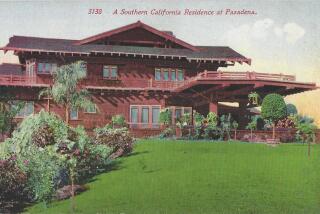Simplicity of Form Is Typical of Spanish Colonial Revival
- Share via
Spanish Colonial Revival is distinguished by the attractive simplicity of its forms, from the related Mission Revival, Italianate, Monterey Revival and a host of styles generally dubbed Mediterranean.
Classic Spanish Colonial houses have less rough woodwork and more gentle detailing than the earlier Mission Revival residences. They are distinguishable from the more elaborate contemporary Italianate villas by their smaller windows and simpler front doorways.
The term Mediterranean is a catch-all designation as vague as the designation Victorian often applied to a wide range of East Coast architecture.
Distinguishing features:
--Low-sloping, red Roman tile roofs.
--Roughly surfaced white stucco walls with rounded corners.
--Simple windows, usually small, often protected by wooden shutters or covered with wrought-iron grilles.
--Simple front doors, often with an arched or rounded top. Sometimes entry porches feature iron spears supporting a canvas awning.
--Asymmetrical layout on two or three levels, with open-plan first floor.
--Several steps leading down into a large living room with beamed or raftered ceilings, often stenciled with decorative patterns.
--Floors of large red tiles in hall and kitchen, and often in the living and dining rooms.
--Use of patterned Spanish or Mexican tiles around fireplaces, bathrooms, kitchens, on stair risers and in friezes.
--Upper-floor bedrooms with French windows opening onto individual balconies with wrought-iron or wooden balustrades.
--Living and dining rooms leading onto patios or terraces covered with pergolas overgrown with jasmine or bougainvillea.
--Gardens, often walled or paved, with small decorative pools or tiled fountains.
More to Read
Sign up for Essential California
The most important California stories and recommendations in your inbox every morning.
You may occasionally receive promotional content from the Los Angeles Times.




